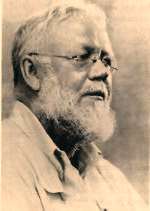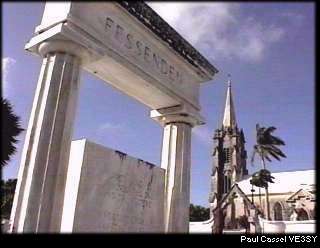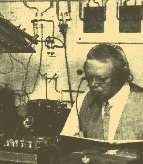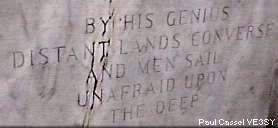

The
Forgotten Canadian
Reginald Aubrey Fessenden
(1866-1932) Physicist Inventor
 While
recently on a business trip in Bermuda I recalled Fred Hammond VE3HC,
mentioning that Bermuda was the final home and burial place of a famous
Canadian, Reginald Fessenden. As it turned out the Hotel I am
staying in is just a few steps from his home and the Whitney Institute at
which he was Headmaster. Fessenden had married a Trott (an old Bermuda
family) and in his memory there are scholarships called the "Fessenden-Trott
Scholarships". Tony, VP9HK informed me that two of his sons have
been awarded this Scholarship.
While
recently on a business trip in Bermuda I recalled Fred Hammond VE3HC,
mentioning that Bermuda was the final home and burial place of a famous
Canadian, Reginald Fessenden. As it turned out the Hotel I am
staying in is just a few steps from his home and the Whitney Institute at
which he was Headmaster. Fessenden had married a Trott (an old Bermuda
family) and in his memory there are scholarships called the "Fessenden-Trott
Scholarships". Tony, VP9HK informed me that two of his sons have
been awarded this Scholarship.
 In speaking with Laurie VP9NMR I learned the location of his grave site
and original homestead. It turned out his home was less than half a mile
down the road that I was staying on and the church was a 5 minute scooter
ride away on the other side of the island. It turned out that Laurie is
originally from Hamilton Ontario and has lived in Bermuda since the late
50's.
In speaking with Laurie VP9NMR I learned the location of his grave site
and original homestead. It turned out his home was less than half a mile
down the road that I was staying on and the church was a 5 minute scooter
ride away on the other side of the island. It turned out that Laurie is
originally from Hamilton Ontario and has lived in Bermuda since the late
50's.
In 1876, when he was only 10 years old, Reginald watched Alexander Graham Bell demonstrate the telephone in his lab in Brantford, Ontario. Six days later, Bell made the first long distance phone call in history, from Paris, Ontario to Toronto, Ontario, a distance of 113 kilometres. From his home in Fergus, Ontario, Fessenden closely followed the work of Bell, and he never forgot his dream of transmitting words without wires.
Few people shared Fessenden's belief that broadcasting voices was possible. When he asked the opinion of the great Thomas Edison, Edison replied, "Fezzie, what do you say are man's chances of jumping over the moon? I think one is as likely as the other." - - - Edison was wrong.
It took
six years for Fessenden to refine his invention but, on Christmas Eve
1906, Fessenden made the first radio broadcast in history.  Radio operators on ships in the Atlantic were shocked to hear a human
voice emitting from the equipment they used to receive Morse code. Many
operators called their Captains to the radio room, where they heard
Fessenden make a short speech, play a record, and give a rendition of
"O Holy Night" on his violin.
Radio operators on ships in the Atlantic were shocked to hear a human
voice emitting from the equipment they used to receive Morse code. Many
operators called their Captains to the radio room, where they heard
Fessenden make a short speech, play a record, and give a rendition of
"O Holy Night" on his violin.
Discovering a way to broadcast human voice by radio is only one of Fessenden's accomplishments - during his life he came up with over 500 other inventions including the Fathometer or depth finder which are reflected in the words of the memorial above the vault of Fessenden's final resting place.
|
|
"By his genius distant lands converse and men sail unafraid upon the deep." |
73 Information courtesy Tony VP9HK,
Laurie VP9NMR and
© 2001 updated
Paul VE3SY
Canadian Communications Foundation web site.
[
TOP ]
Kitchener-Waterloo
Amateur Radio Club Inc.
Comments to
webmaster@kwarc.org
2021-10-30
